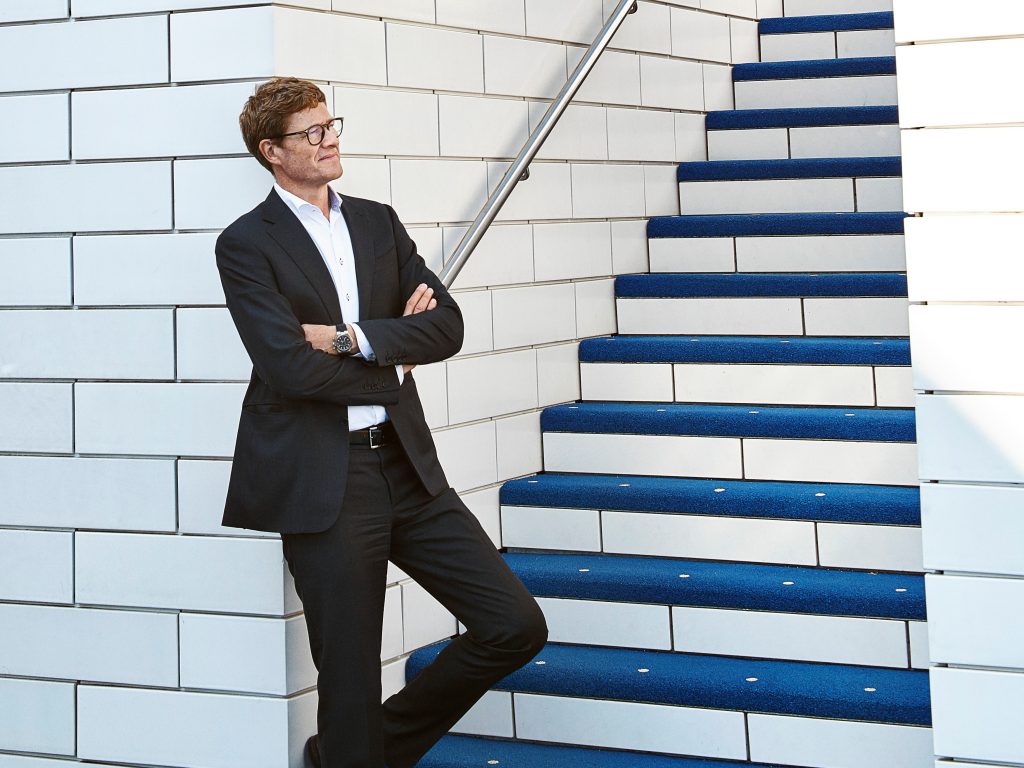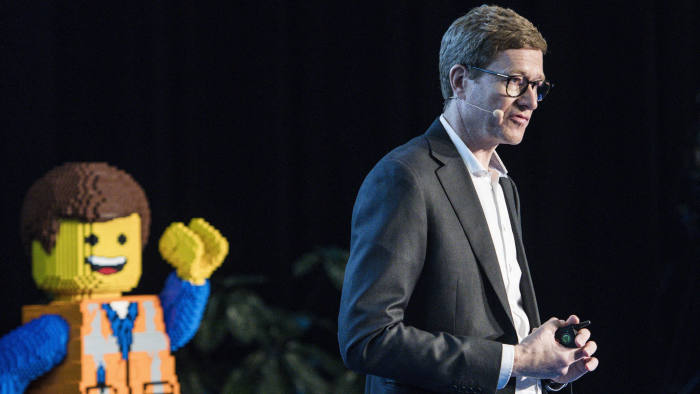Leadership Style
Through an analysis of interviews, testimonials, and leadership case studies, I have identified several distinct traits and characteristics that have contributed to Christiansen’s success as a leader.

ORGL-5005: Influential Organizational Leader Profile
Research Project by Angela Baker
Through an analysis of interviews, testimonials, and leadership case studies, I have identified several distinct traits and characteristics that have contributed to Christiansen’s success as a leader.

On the surface, Christiansen is a rather reserved, straightforward, and practical leader. He is not extroverted, overly charismatic, or seeming of divine origin like some historical leaders. In fact, in one video interview, Christiansen awkwardly toppled a lego sculpture with a misplaced hand gesture (www.amazoninterview.coach, 2018). But it demonstrates his most endearing quality — he is unabashedly human and extremely relatable.
Those that know Christiansen admire his humility and authenticity. “He is nothing flashy, just quietly one of the most impressive business people I’ve met,” said one Danish business executive around the time of Christiansen’s appointment (Milne, 2018). These characteristics are a common trait in danish leaders. In a study on Nordic leadership, researchers found that danish leaders will strongly avoid attributes and behaviors associated with being self-centered or status-conscious (Nordic Council of Ministers et al., 2018). In the face of failure, they are not concerned with “saving face” and do not display conflictive behavior. In fact, Christiansen often publicly praises his employees on social media and attributes the company’s success to their collective teamwork and genius (Christiansen, 2021b).

Christiansen aligns and motivates employees using simple and honest communication. Christiansen describes his approach to leadership as “not so high-flying” and almost deceptively straightforward. “It has always been to try to be as honest and as simple in the language as possible. Say what you’re going to do . . . and stick at it; live it yourself as leaders,” he says (Milne, 2018).
This style of communication is a typical danish leadership trait. Leadership in Denmark is dynamic and interactive. Open dialogue and the exchange of opinions between employees and managers are highly encouraged and valued. In addition, communication is often verbal and direct. “In general, Danes are honest and like getting straight to the point, leaving little room for unclear or vague messages” (Work Live Stay Southern Denmark, 2021).
To understand why Christiansen is a highly inclusive leader we must first examine danish cultural influences. Danish organizations often have a flat hierarchical structure with a high degree of delegation of responsibility from managers to employees. They rarely use titles and employees of all positions and seniority are encouraged to participate. The culture is also that of an egalitarian mindset where employees are treated equally and with respect (Work Live Stay Southern Denmark, 2021).
The Leadership Playground initiative is a good demonstration of Christiane’s tendencies towards inclusivity. Christiansen empowered his employees to make lasting decisions about Lego’s leadership model and company culture. Many organizations would typically assign this responsibility to the executive leadership team. But, Christiansen wants his employees to feel a real, emotional connection to the work they do and how they do it. To achieve this, he needed to build the culture on a foundation of inclusivity and collaboration. By drawing feedback from a diverse group of employees within the organization, they could generate richer ideas and create more buy-in throughout the organization. The leadership playground would thus encourage employees to think and build creatively together.
Inclusivity is a very common trait for danish leaders, who often value cooperation and consensus-building (Nordic Council of Ministers et al., 2018). Furthermore, danish companies typically have a low power distance in that they believe in distributing power evenly. They typically also have higher levels of “femininity,” which describes a preference towards collaboration and caring for the weak. In the danish context, leaders operate more like coaches, inspiring and motivating their employees, rather than emphasizing their own decision-making authority.
As summarized by Lego chairman Knudstorp, “(Christiansen) has a solid rooting in Danish values, where you have authority because you’re a competent, credible and authentic leader, not because you’re the boss who sits at the end of the table and smokes big cigars” (Gronholt-Pedersen & Jensen, 2017).
Christiansen is a visionary with a focused determination to achieve results. In fact, Christiansen said that one of his first leadership lessons was that “as a leader, it is essential to be visionary and see where we need to go… but it is crucial to be able to make it happen” (Milne, 2018).
Nordic leaders are traditionally purpose-driven. They believe in doing things for the greater good of an organization and instinctively try to establish and share the purpose and meaning behind everything they do. Instead of commanding based on positional authority, as is traditional in the United States, they want to motivate employees towards a common purpose based on mutual respect and interest (Hippe Brun, 2019).
When Christian was appointed CEO, he mentioned what an honor and privilege it was to work for an organization as iconic and purpose-driven as Lego (The Lego Group, 2019b). He spoke with determination about tackling the important challenges facing this generation of children and the urgency behind the company’s mission to inspire and develop the future leaders of tomorrow. Guided by the company spirit: “Only the best is good enough,” Christian has been driving the company mission forward with considerable success.
“In the same way a child would build with LEGO bricks, our project team took the elements of a workspace that employees love and brought them all together to create something unique.”
~ Niels Christiansen
Christiansen passions himself on being innovative and risk-taking, which is evident through his success with the company’s digital transformation efforts. Before coming to Lego, Christiansen, an engineer by trade, helped invent one of the first BlueTooth devices while an engineering graduate for a hearing-aid manufacturer (Milne, 2018).
Innovation and creativity are at the core of the Lego brand. Christiansen seeks to nurture those qualities whenever possible. For example, Christiansen is building a new Lego campus with a state-of-the-art office building to inspire creativity and allow for more collaboration and innovation within the workforce (Christiansen, 2019). As Christiansen explains, they can attract and retain talented employees “by ensuring that we create a work environment that inspires them to be creative, enable them to unfold their talents and skills and collaborate in new and innovative ways.” The building adopts a playful style with large-scale lego bricks on the interior and exterior walls.
The focus on innovation and creativity is a common characteristic of danish leaders, who are often described as being highly responsive, open and curious, and willing to experiment and fail (Hippe Brun, 2019). They build structures where people receive and give feedback to support learning and growth. Christiansen wonderfully demonstrates the Lego core values of imagination, creativity, and fun in everything that he does.
